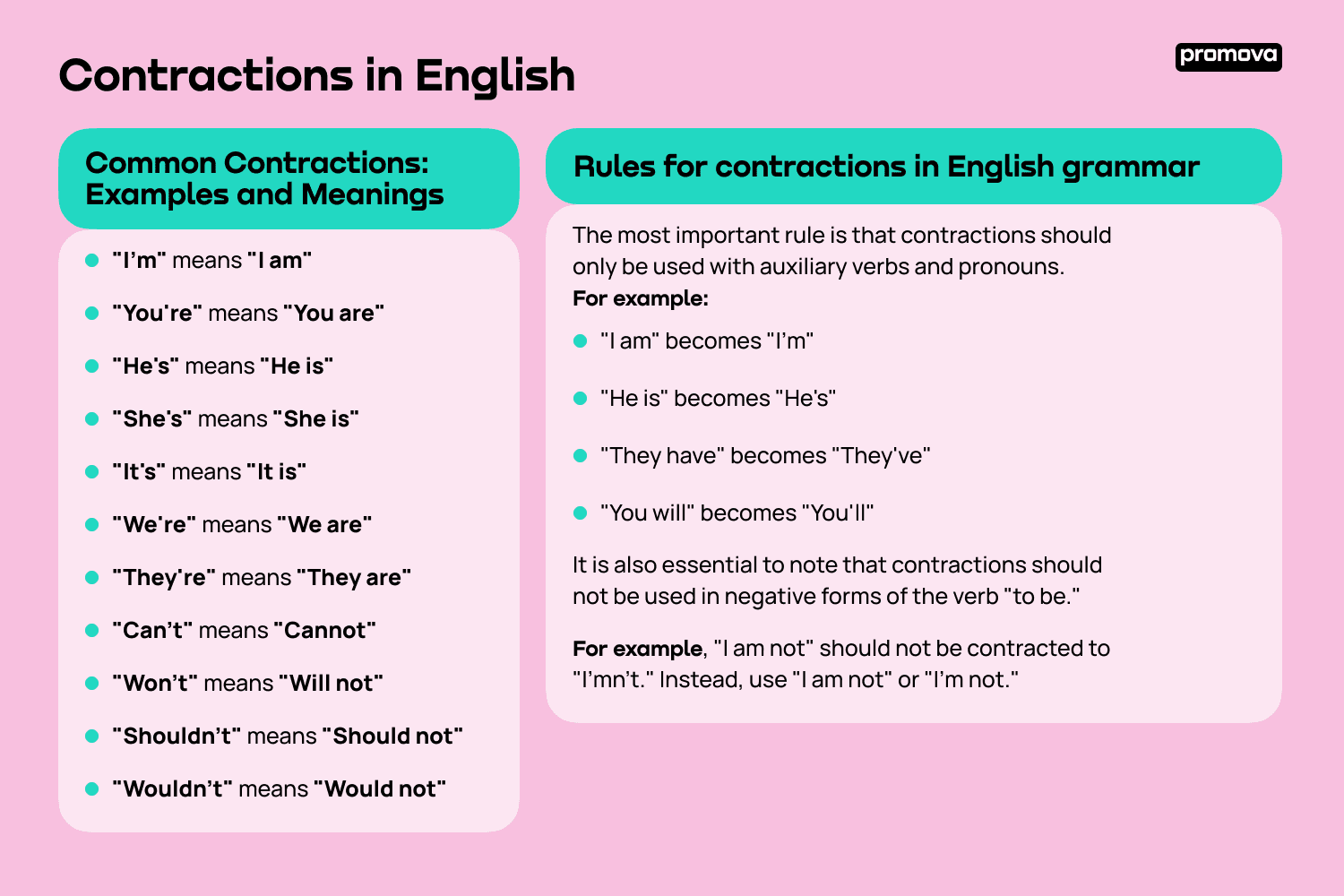Contractions in English
Contents
As you learn the English language, you will encounter various grammar rules and concepts that may seem challenging to understand. One such concept is contractions. Contractions are an essential part of the English language that can make your speech and writing sound more natural and conversational. In this reference, we will explore what contractions are, how to use them correctly, and when to avoid them.
What are contractions and how do we use them?
Contractions are shortened versions of two words formed by replacing a letter or multiple letters with an apostrophe. The apostrophe stands in place of the letters you remove. For example, "can not" becomes "can't," and "will not" becomes "won't."
Contractions are common in spoken English and informal writing, such as emails or text messages. They make your language sound more natural and conversational. However, in formal writing or academic papers, it is best to avoid contractions.
Rules for contractions in English grammar
There are specific rules for using contractions in English grammar. The most important rule is that contractions should only be used with auxiliary verbs and pronouns. Here are some examples:
- "I am" becomes "I'm"
- "He is" becomes "He's"
- "They have" becomes "They've"
- "You will" becomes "You'll"
It is also essential to note that contractions should not be used in negative forms of the verb "to be." For example, "I am not" should not be contracted to "I'mn't." Instead, use "I am not" or "I'm not."
Common Contractions: Examples and Meanings
There are numerous contractions in the English language, and it can be challenging to remember them all. Here are some commonly used contractions and their meanings:
- "I'm" means "I am"
- "You're" means "You are"
- "He's" means "He is"
- "She's" means "She is"
- "It's" means "It is"
- "We're" means "We are"
- "They're" means "They are"
- "Can't" means "Cannot"
- "Won't" means "Will not"
- "Shouldn't" means "Should not"
- "Wouldn't" means "Would not"
Understanding these contractions and knowing when to use them can help you communicate more effectively in spoken and written English.

When you should avoid contractions
While contractions are a natural part of the language, there are times when you should avoid using them. In formal writing like academic papers or business letters, contractions are generally not appropriate. The use of contractions can make your writing seem less professional and may even be considered a grammatical error.
Another situation where contractions should be avoided is when they can cause confusion. For example, "it's" can either mean "it is" or "it has." If the context is not clear, it is better to use the full form of the verb.
1
Common Mistakes
While contractions are a straightforward grammar concept, they are often misused. Common mistakes to avoid when using contractions:
- Confusing "it's" with "its": "It's" is a contraction of "it is" or "it has." "Its" is a possessive pronoun that shows ownership.
- Using contractions in formal writing: As mentioned earlier, contractions are not appropriate in formal writing.
- Using contractions in negative forms of the verb "to be": Negative forms of "to be" should not be contracted, as it can lead to confusion.
Summary
Contractions are a crucial part of the English language, and they can make your speech and writing sound more natural and conversational. However, it is vital to use them correctly and appropriately to avoid confusion and grammatical errors. Remember to only use contractions with auxiliary verbs and pronouns, avoid using them in formal writing, and use the full form of the verb when necessary.
If you want to improve your English language skills further, consider taking an English course or working with a tutor. With time and practice, you can master the language and never have to worry about grammar again!
Comments